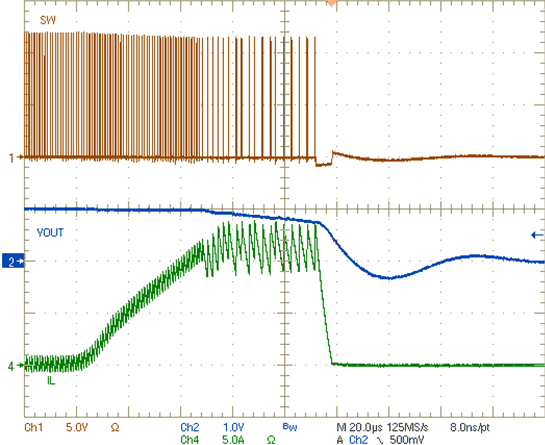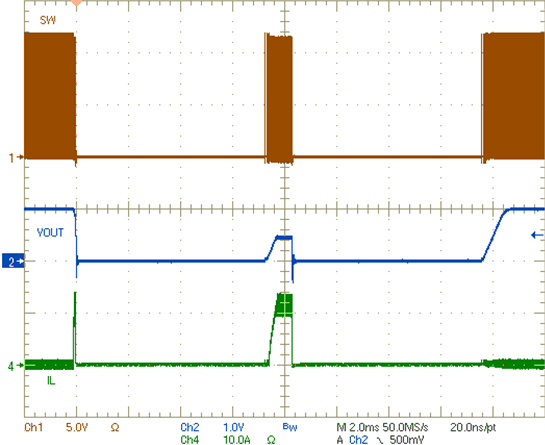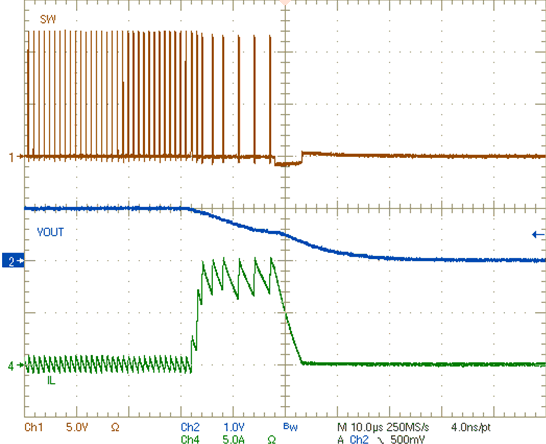SLUUCE9A December 2020 – April 2021 TPS543820 , TPS543820E
- Trademarks
- 1Introduction
- 2Configurations and Modifications
-
3Test Setup and Results
- 3.1 Input/Output Connections
- 3.2 Efficiency
- 3.3 Output Voltage Regulation
- 3.4 Load Transient and Loop Response
- 3.5 Output Voltage Ripple
- 3.6 Input Voltage Ripple
- 3.7 Synchronizing to a Clock
- 3.8 Start-up and Shutdown with EN
- 3.9 Start-up and Shutdown with VIN
- 3.10 Start-up Into Pre-Bias
- 3.11 Hiccup Current Limit
- 3.12 Overvoltage Protection
- 3.13 Thermal Performance
- 4Board Layout
- 5Schematic and Bill of Materials
- 6Revision History
3.11 Hiccup Current Limit
Figure 3-33 through Figure 3-37 show the TPS543820 hiccup current limit feature. These waveforms are measured using U2. Figure 3-33 and Figure 3-34 show the response to an overload with the High and Low current limit settings. Figure 3-35 and Figure 3-36 show the response to a hard short on the output with the High and Low current limit settings.
Figure 3-37 shows the TPS543820 entering hiccup with an overload on the output and the High current limit setting with a longer timescale. The TPS543820 tries to restart after the Hiccup wait time period but the overload was still present on the output. In the next restart attempt, the overload has been removed so the TPS543820 starts up normally.
 Figure 3-33 U2 Output Overcurrent
Protection – Overload with High
Limit
Figure 3-33 U2 Output Overcurrent
Protection – Overload with High
Limit Figure 3-35 U2 Output Overcurrent
Protection – Short
with High Limit
Figure 3-35 U2 Output Overcurrent
Protection – Short
with High Limit Figure 3-37 U2 OCP Hiccup and
Recover – High
Limit
Figure 3-37 U2 OCP Hiccup and
Recover – High
Limit Figure 3-34 U2 Output Overcurrent
Protection – Overload with Low Limit
Figure 3-34 U2 Output Overcurrent
Protection – Overload with Low Limit Figure 3-36 U2 Output Overcurrent
Protection – Short with Low Limit
Figure 3-36 U2 Output Overcurrent
Protection – Short with Low Limit